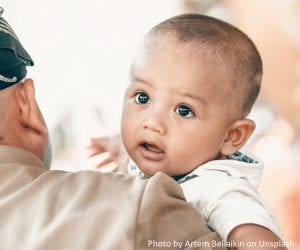The guiding concept of Reading and Writing in the Content Area, a course for future teachers at Old Dominion University, is that all teachers, no matter what content area, are responsible for teaching literacy to students. As such, the class focuses on research based strategies for teaching reading and writing in all content areas. This semester, the course instructor Maria O’Hearn used the article “Birth Dearth Eclipsed by Population Explosion” in the class to have her future teachers develop instructional reading strategies necessary in any number of high school classes – social studies, science, math, or even health & PE.
The Assignment
The future teachers first read the article, knowing they’d need to develop strategies for high school students who would hypothetically be reading the same article. In small groups, the future teachers were then charged with completing a four part assignment that included: questions to activate prior knowledge, instructional scaffolding (previewing potentially difficult vocabulary ahead of time), an imagery task, and five questions for a reading anticipation guide.
Classroom-ready Reading Strategies
The final product of the assignment are ready-to-go action items for high school classrooms that promote reading in the content area and literacy. Outlined below are descriptions of the four tasks and examples of each developed by Maria’s group of future teachers.
Step 1: Activate students’ prior knowledge before reading with open ended questions.
Here are some questions Maria’s class wrote to dig into what students already know about content covered in the article. These questions would be asked of students prior to reading.
- How many children are in your family? How do you think birth rates affect the country?
- Do you have any siblings? Are they any reasons you know that you are an only child?
- Would you predict that the world’s population is growing or shirking? Support your answer.
- How can fertility rates affect a country?
- What role, if any, should the government have with family planning?
- What do you think is the current population of the world?
- What countries limit the number of children women can have?
- What areas of the world would you predict are experiencing a population decrease?
Step 2: Prepare instructional scaffolding.
Maria’s class determined that the following could be areas or terms that would trip up their students and may need to be addressed beyond the individual students’ own reading.
- Define the term fertility rate.
- What do you think ‘birth dearth’ means?
- Scan the article and list words that you do not know the meaning of.
- Define population control.
Step 3: Develop an imagery task to be completed after reading the article.
Maria asked her class to create a task that would require students to visualize an important principle of the article. Here are some tasks the future teachers determined would work well in their high school classrooms:
- Look at chart of data from several countries experiencing low birth rates. Describe what you see and what you think could be the reasons.
- Show data from two countries – one with a declining birth rate and one with an increasing birth rate. Explain what you see and why.
- Imagine how many children you would like to have if you become a parent. Given that number, think about the economic and physical impact that would have. List three changes for each.
- Look at a map of the world that shows population density. Now imagine how that map would change if the population of the world went up one billion more. Where would those changes take place? How would it impact resources?
- Imagine a “packed world.” What would rural areas look like if they became like New York City?
Step 4: Write questions for reading anticipation guide
In order to stimulate discussion prior to reading the article and promote some controversy, the future teachers each wrote five questions for their high school students to answer. Here are some samples from the Reading Anticipation Guides for “Birth Dearth Eclipsed by Population Explosion”:
- Under what circumstances should the government get involved in citizens’ decisions to have children?
- How does having siblings or being an only child impact your thoughts on population growth?
- What factors should influence a women’s decision on how many children she should have?
- What are ways a government can encourage population growth?
- How is population growth impacted by the availability of birth control?
- Some women have to choose between delaying pregnancy and work life. What are your thoughts on this statement?
- What kind of paternity leave should a father have?
- What would be possible reasons that women would delay starting a family?
- How would you feel if the government limited the number of children you can have?
- Do you think population in the U.S. is increasing annually or decreasing? What are indicators that would impact your quality of life directly?
- How does working impact family life?




